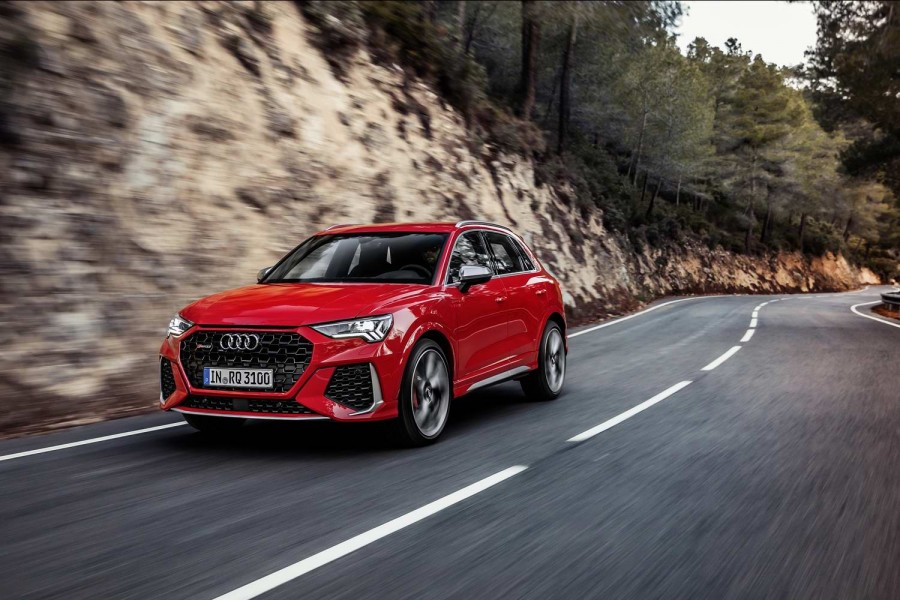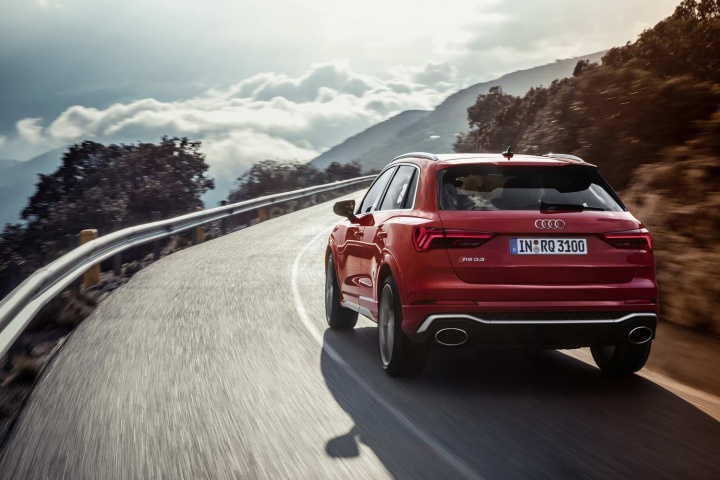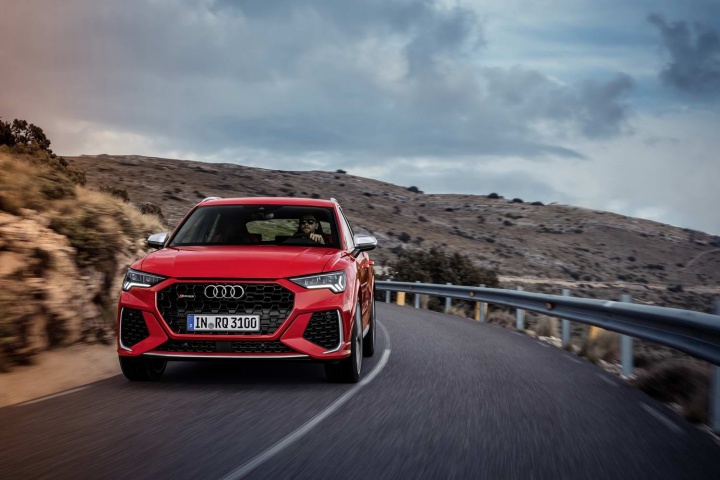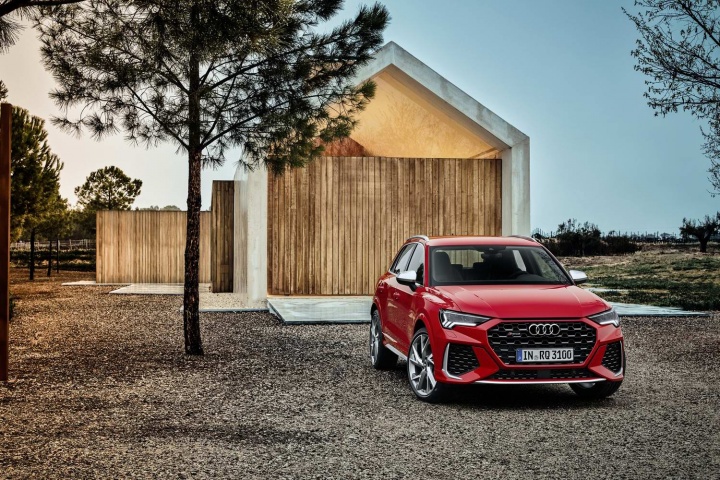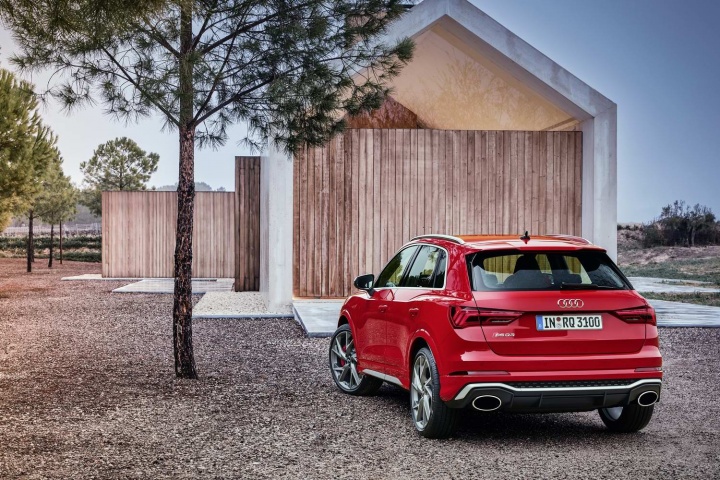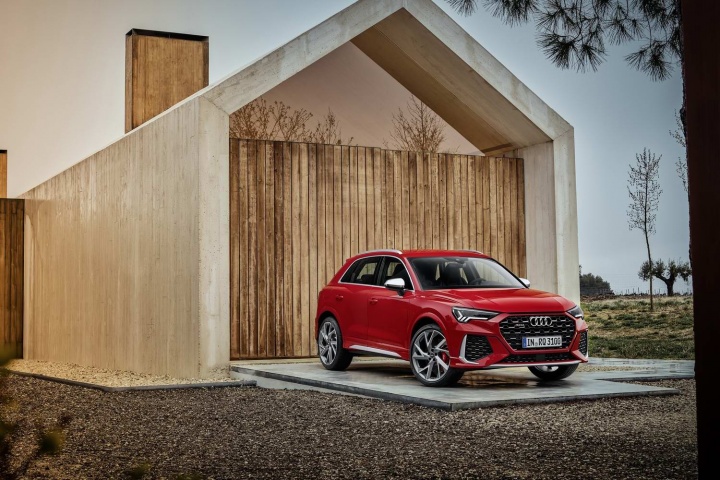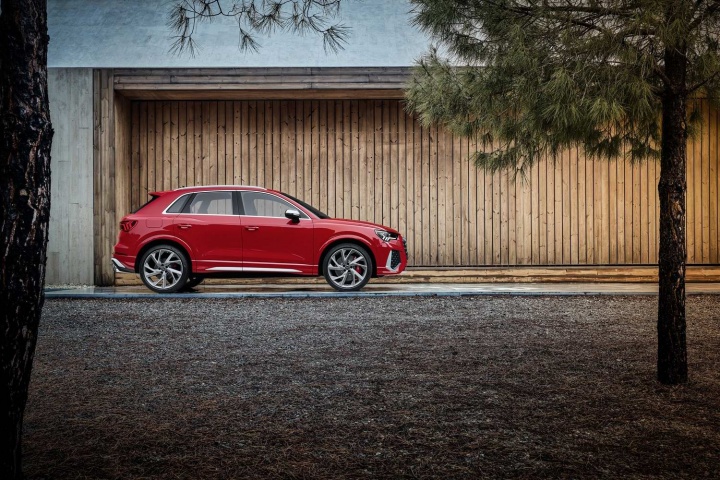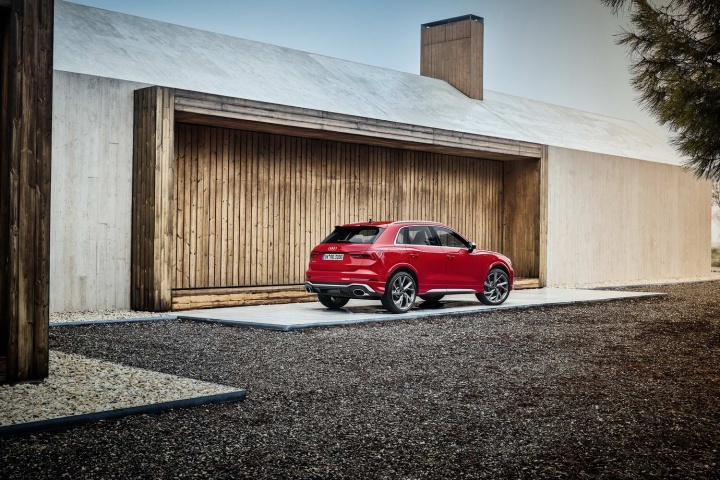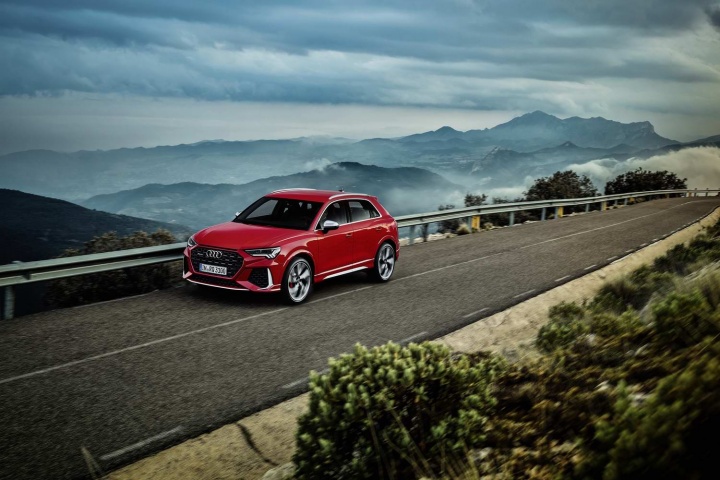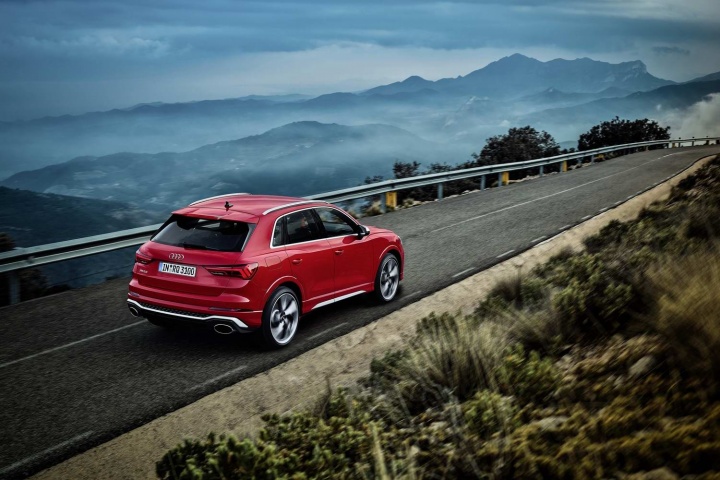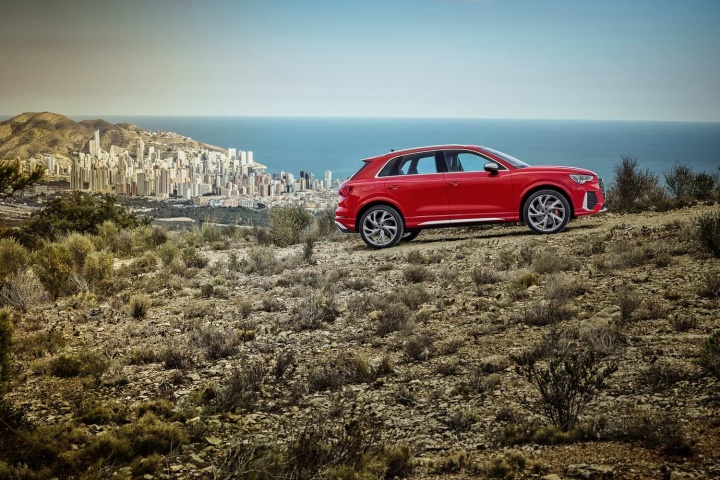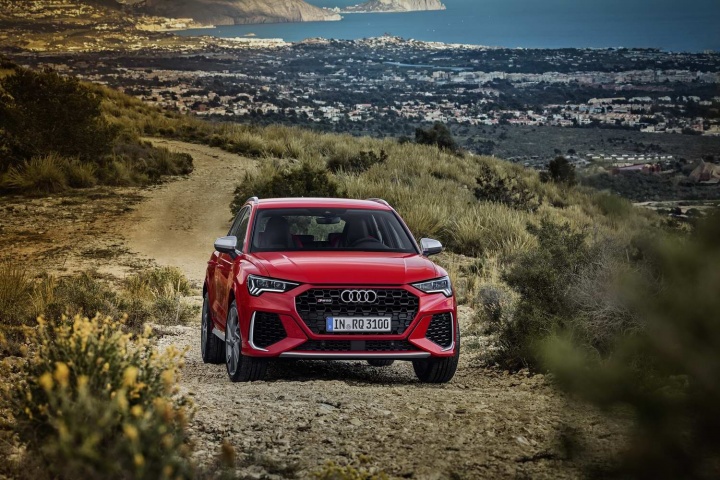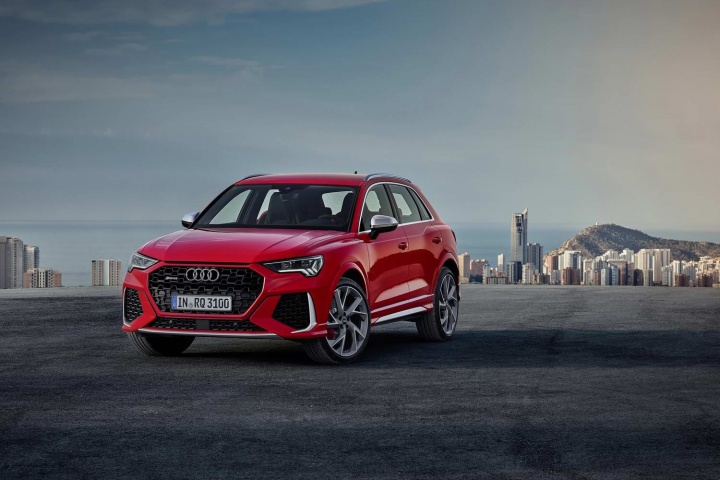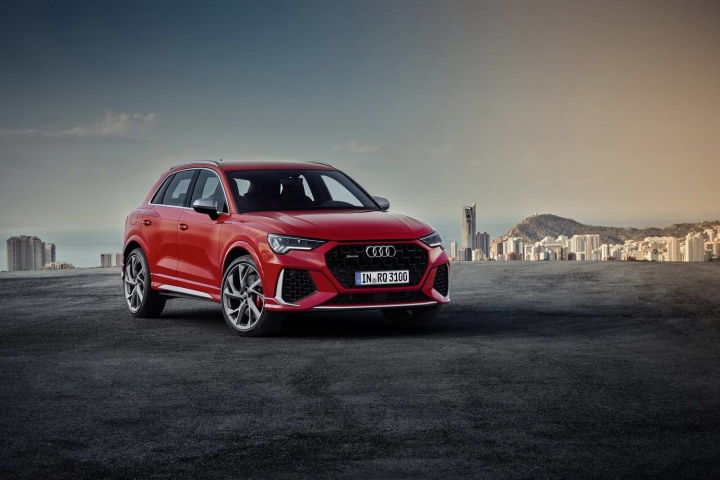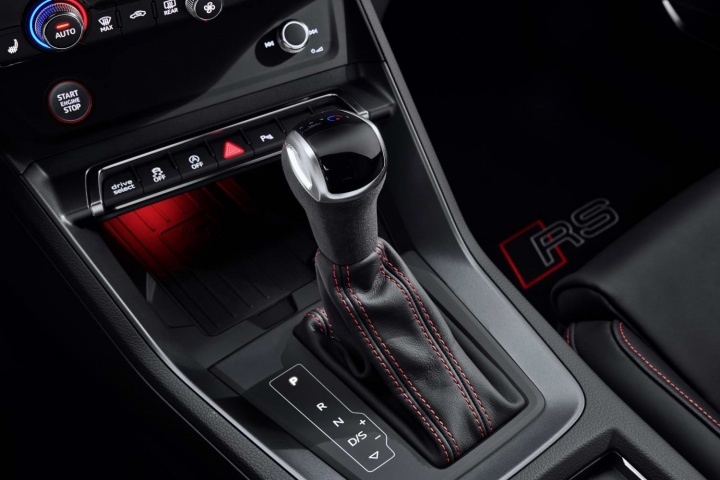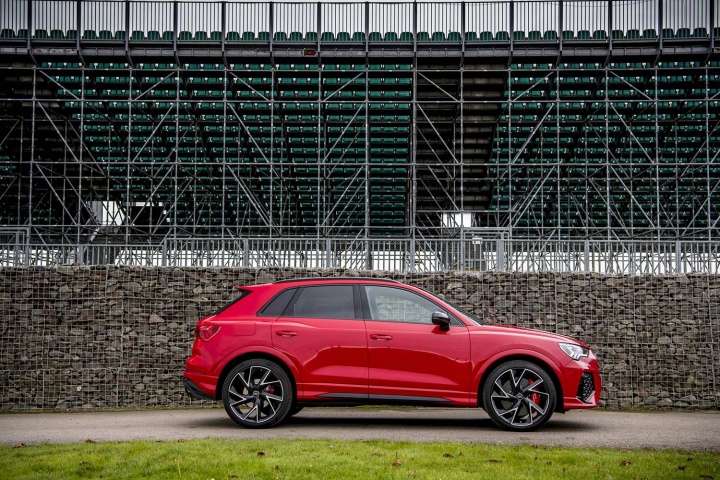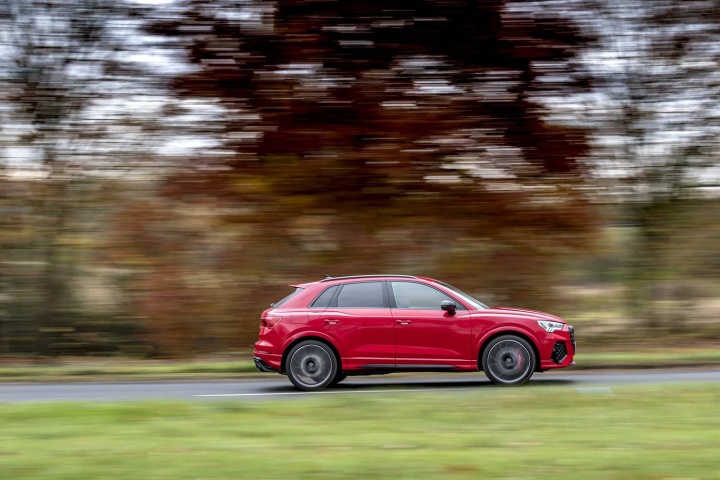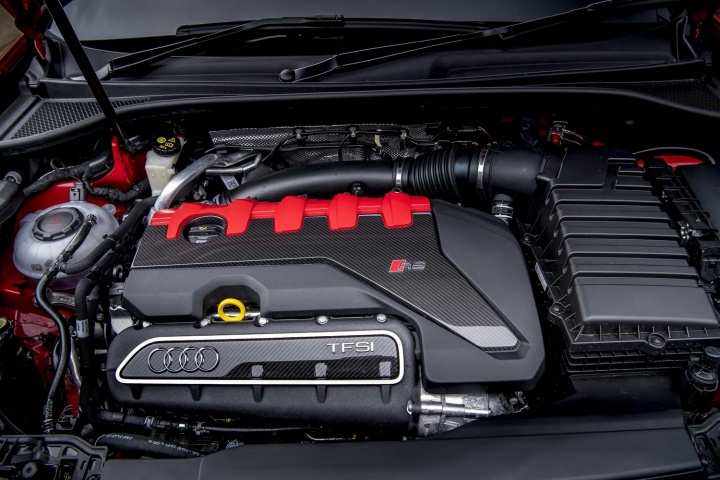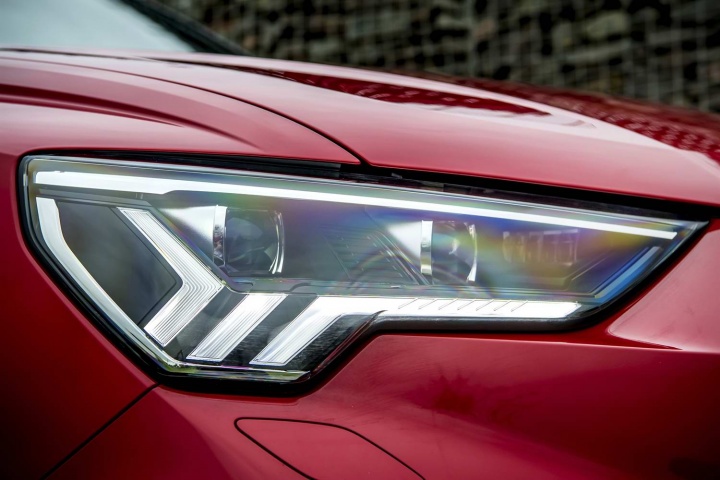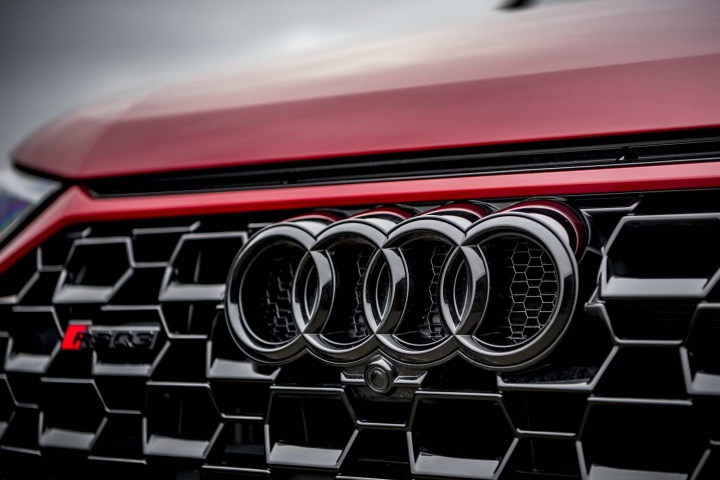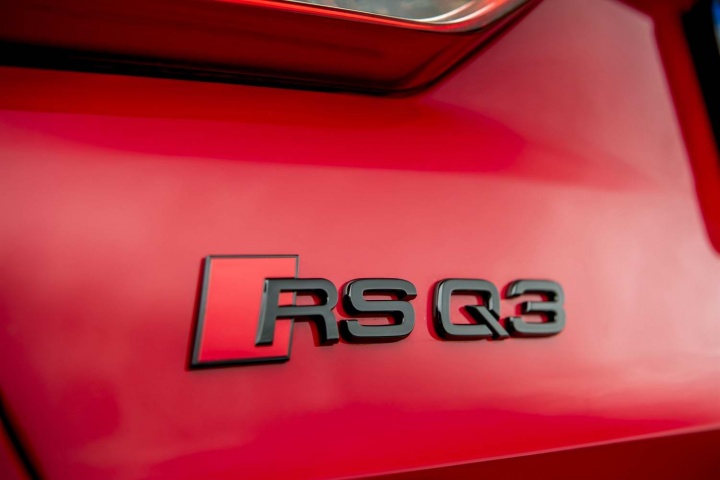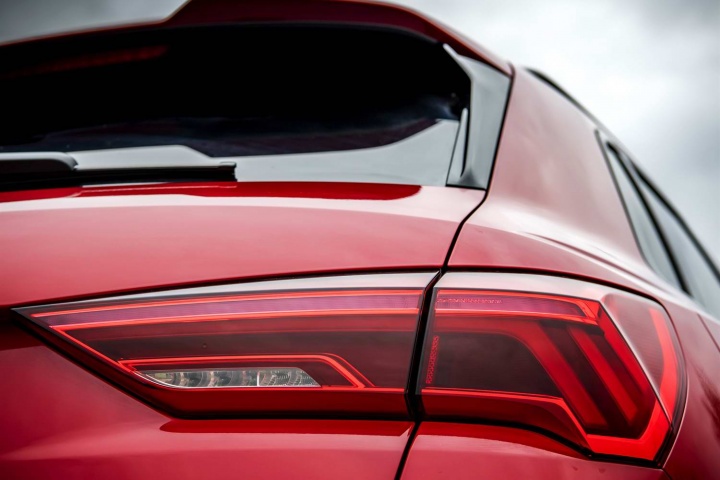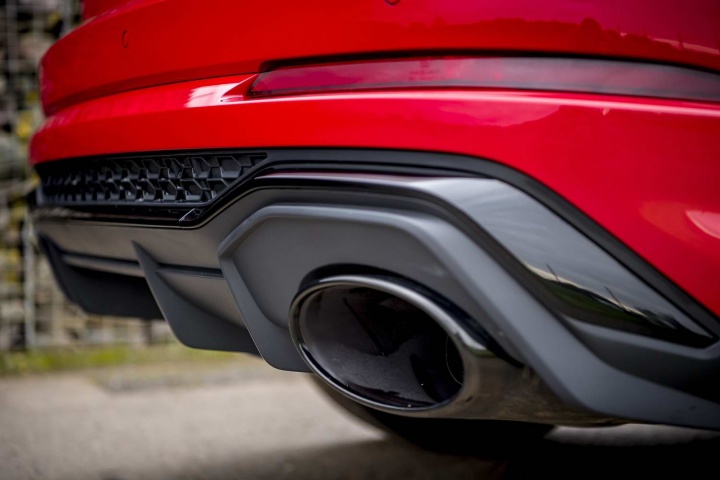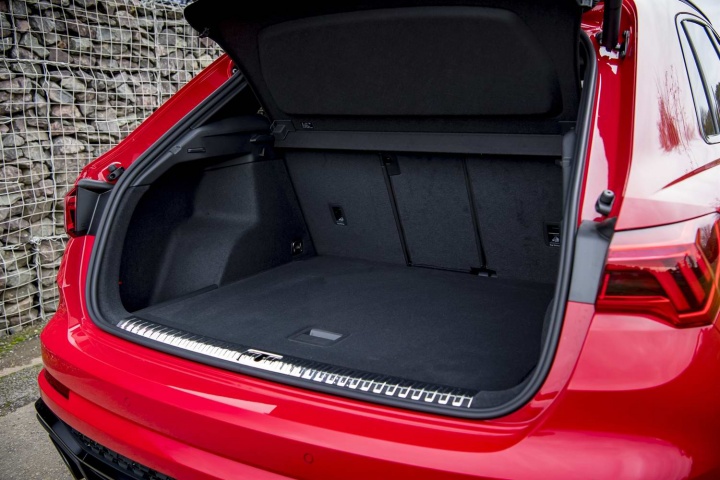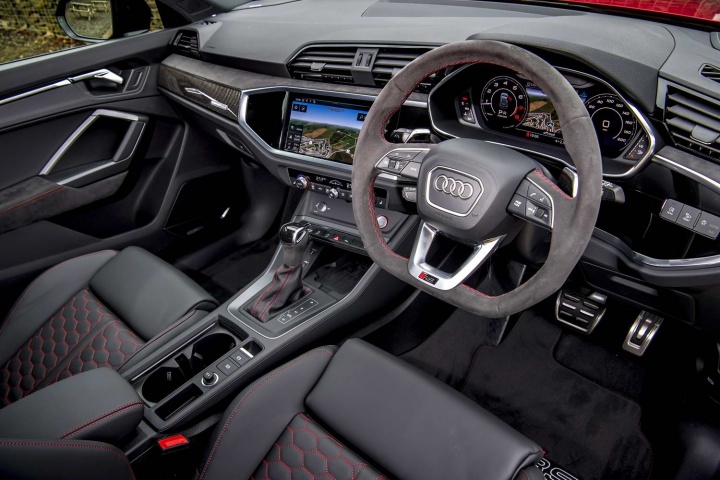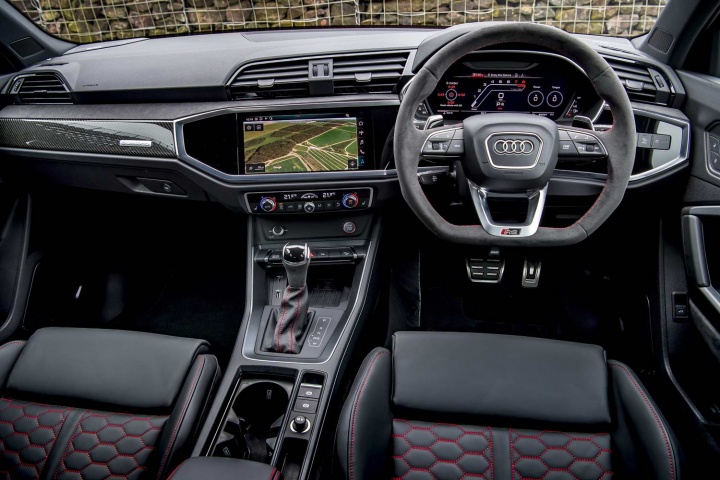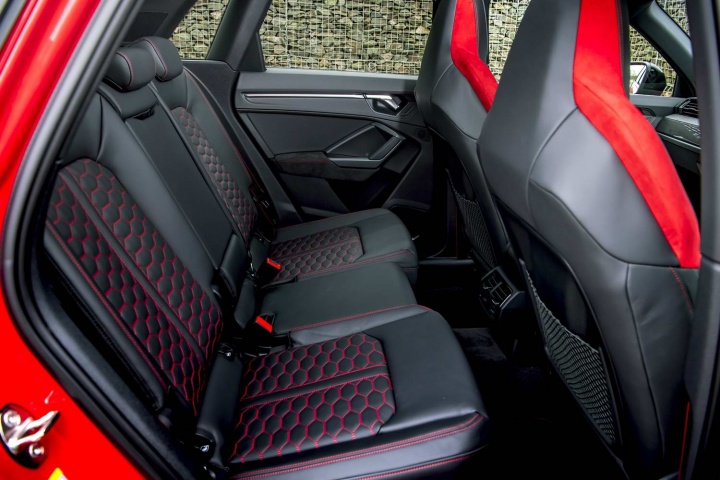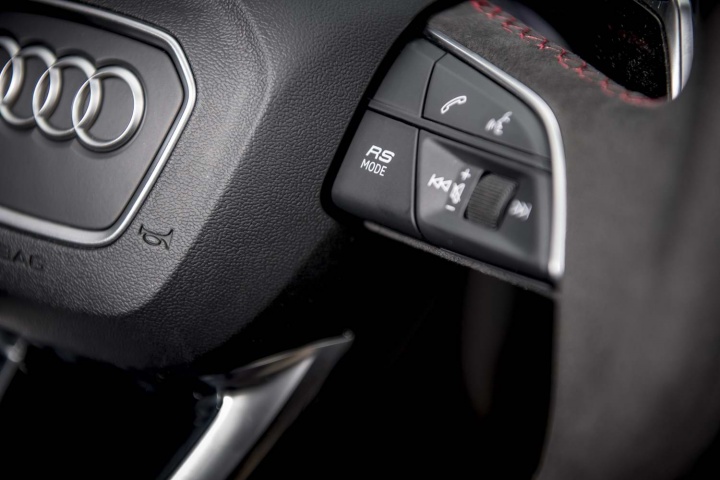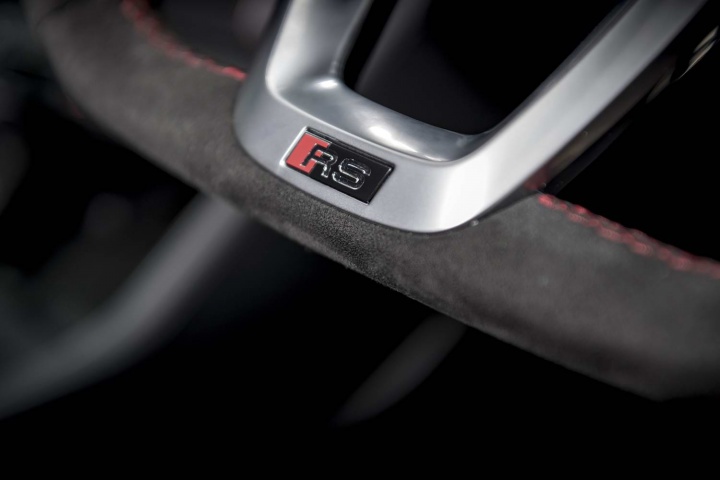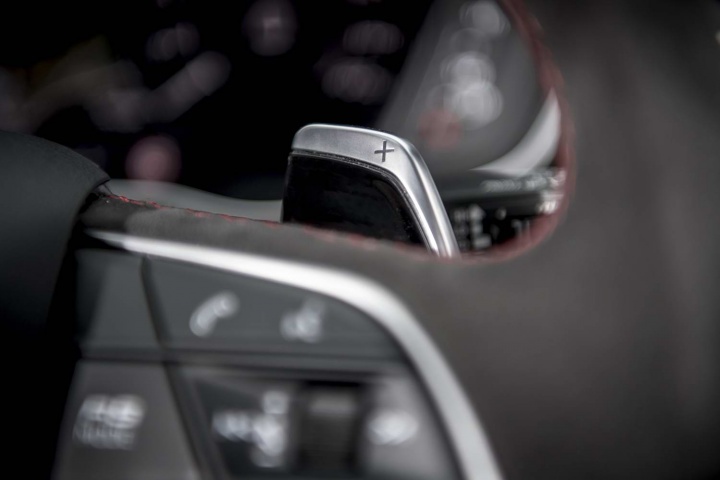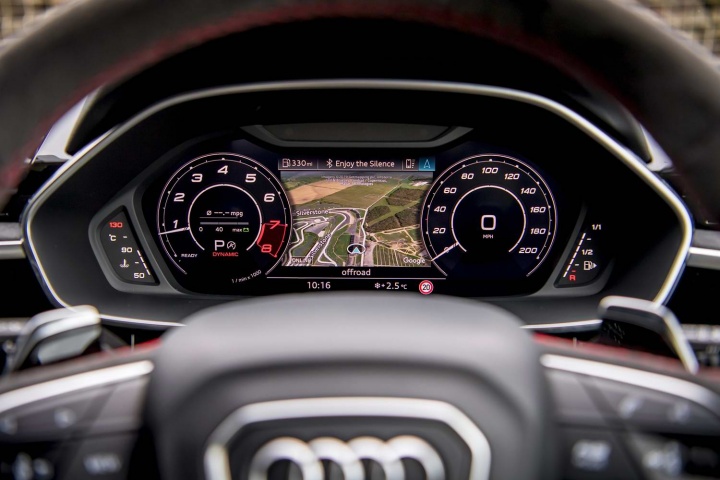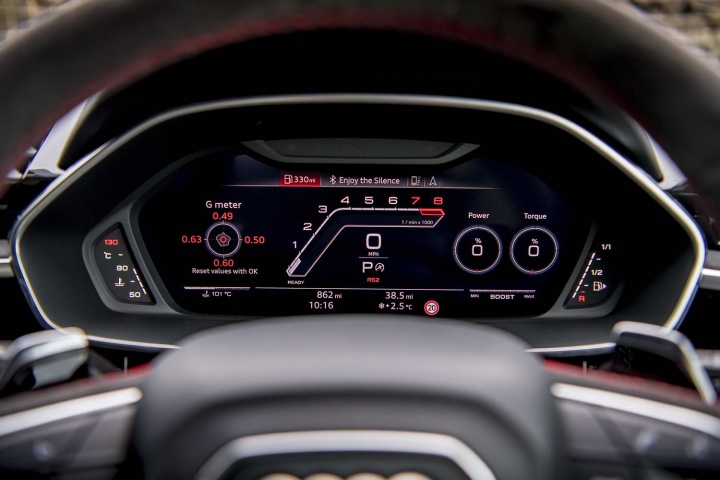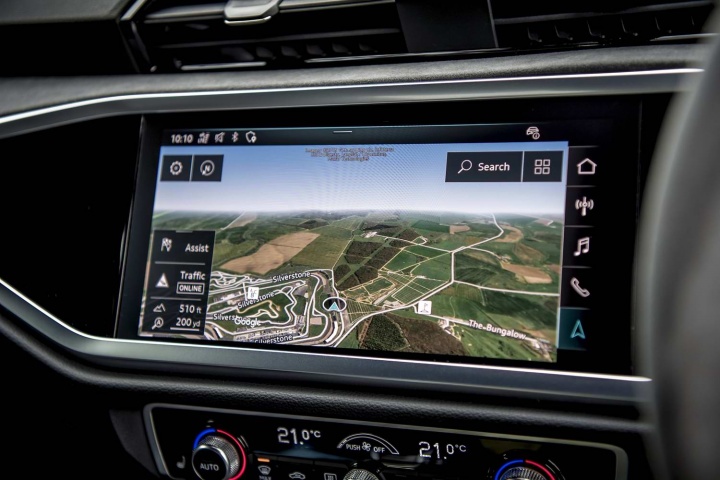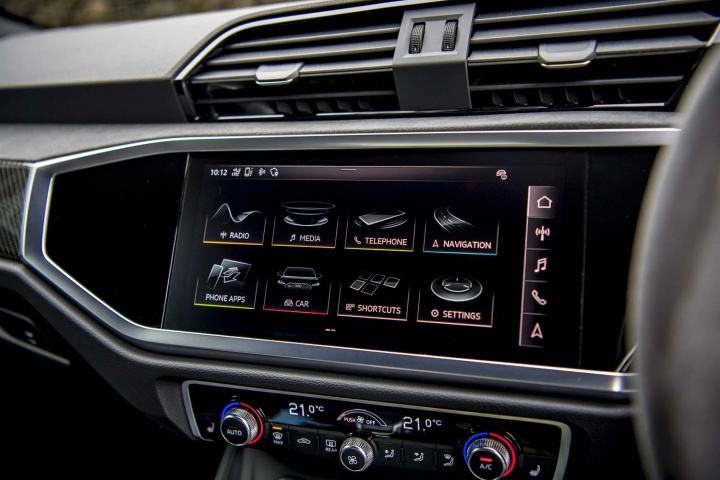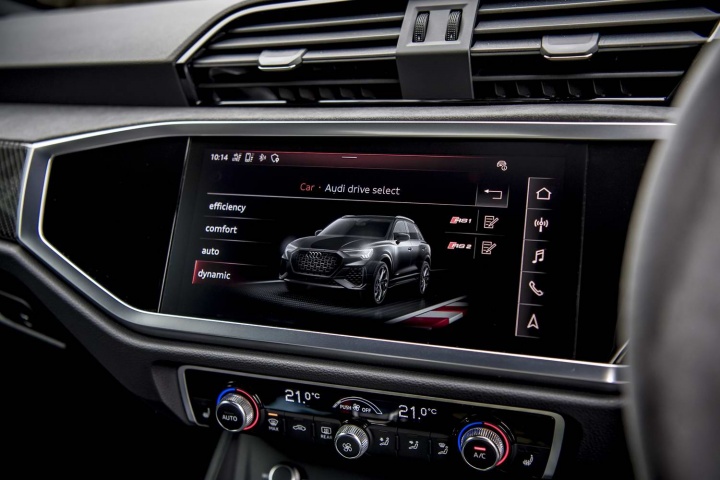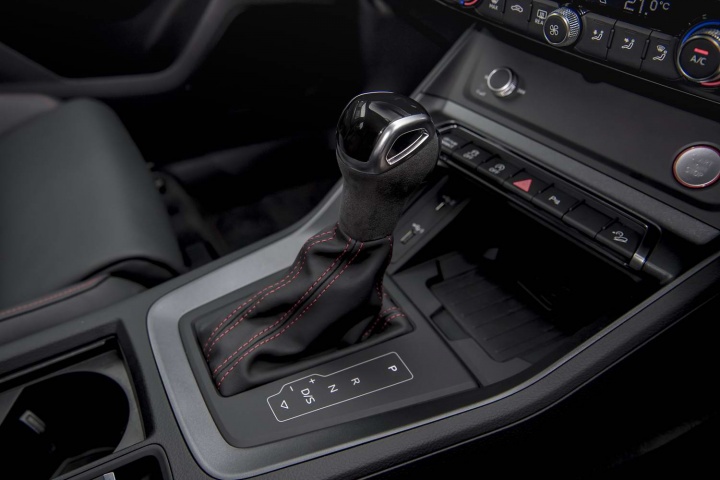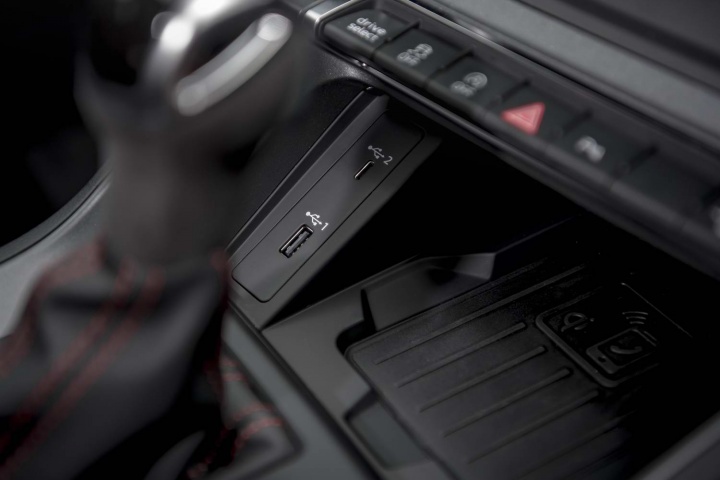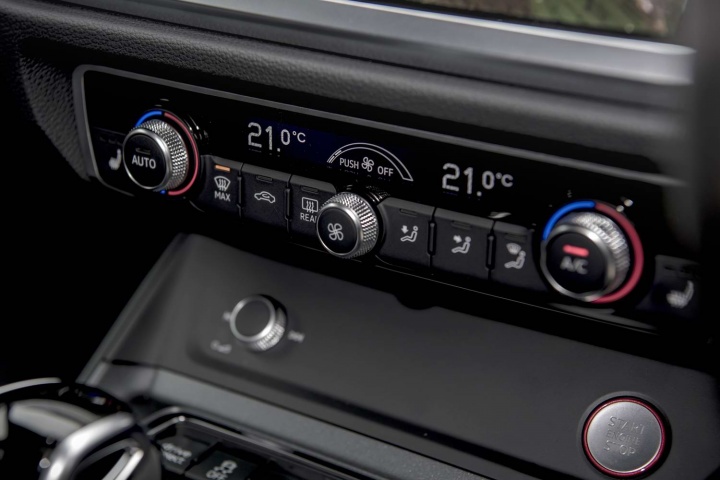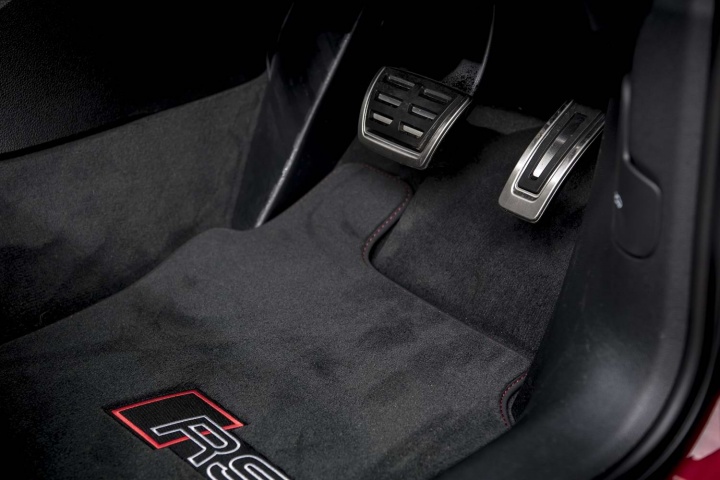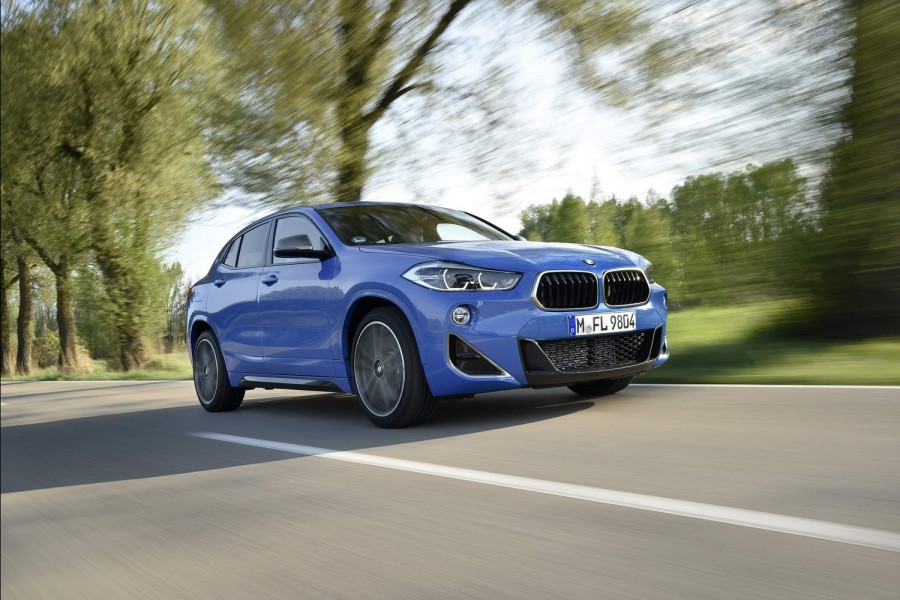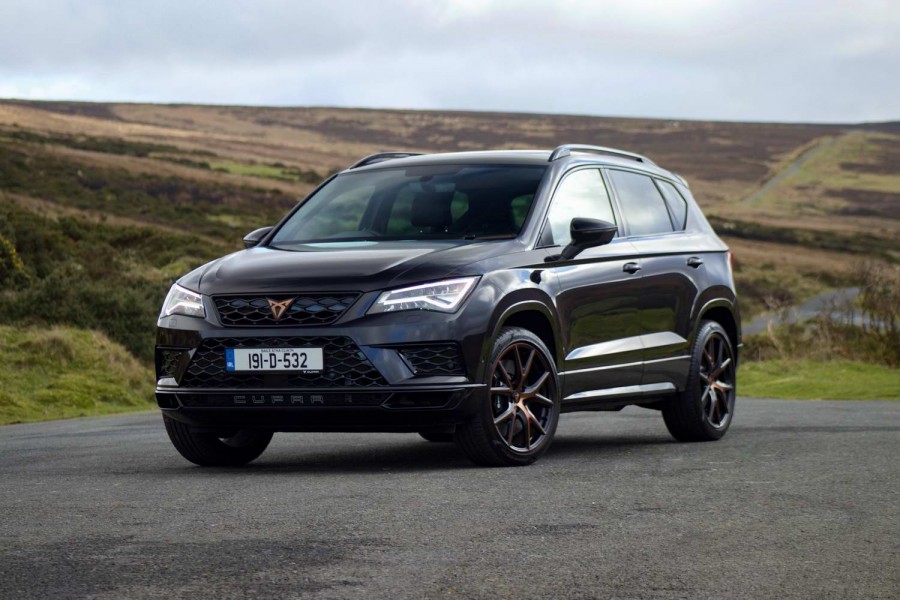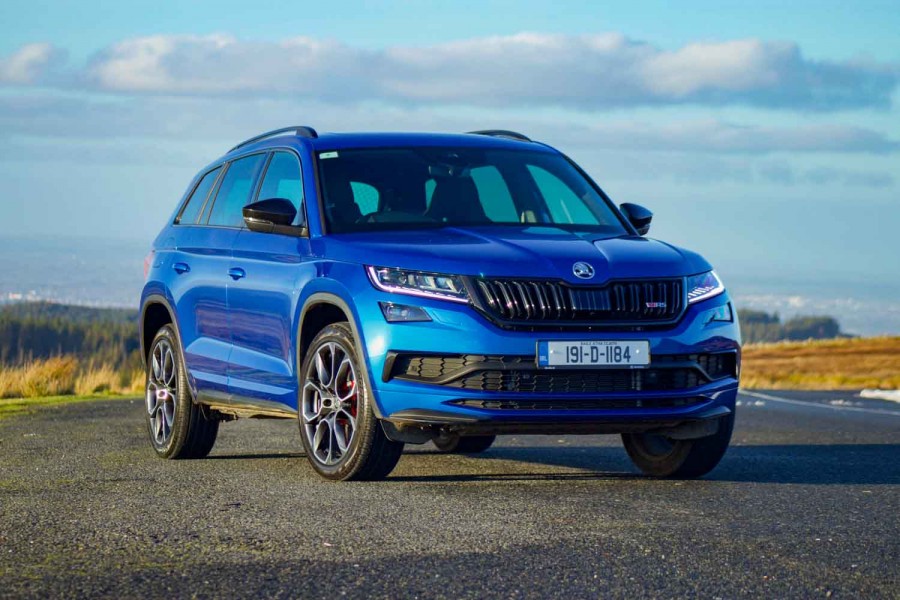Now with a full 400hp from its mighty 2.5-litre turbo five-cylinder engine, the 2020 Audi RS Q3 enters the big boy club of performance. Is it worth the effort, though?
In the metal
As you'd expect, the Audi RS Q3 looks rather good. I mean, you need to like grilles, because there's more grille here than in the waiting room of a South Dublin orthodontist. The main 'singleframe' grille is massive, black and menacing, and it's backed up by more vents in the bumper and under the leading-edge lip of the bonnet. Some of these are, rather sadly, fake, but they don't much detract from the overall handsomeness of the Q3. It'll look nice on your driveway sir or madam.
Inside, the good looking-ness continues. There are high-backed, perforated leather bucket seats with contrast stitching, a big ten-inch touchscreen angled towards the driver in the centre of the dash (although thankfully Audi persists with physical controls for the heating and air conditioning in the Q3) and a 12-inch digital TFT screen in front of the driver by way of instrumentation. That also includes special RS-specific instrument layouts for you to browse through when you're stuck in traffic. There's also a flat-bottom steering wheel, clad coquettishly in Alcantara suede, and which has the RS button that allows you to easily flick it from gravel stage monster into smooth and rapid school run master.
Behind, there's reasonable leg- and headroom and a 530-litre boot - true whether you go for the 'Vanilla' SUV-shaped Q3, or the 'Caramel Chew-Chew' Sportback, with its chopped-roof coupe-like styling. Normally, I find such styling affectations on an SUV risible, but, somehow, Audi makes it work and the Sportback version looks good. It also only gives away any practicality when you've got the back seats folded down (it surrenders 200 litres of load space to the regular version at that point) and headroom in the back is only marginally affected.
Pretty much none of which matters because the entire, whole, and absolute reason for buying an RS Q3 is in the nose, behind that massive grille. It's the 2.5-litre, five-cylinder turbo petrol engine that has already seen such fine service in the Audi RS 3 and TT RS, and which has been - in previous forms - a serial winner in its category at the International Engine of the Year awards. Here, it's packing 400hp and 480Nm. Which is healthy.
Driving it
If we said the RS Q3 had a split personality would you hold it against us? It is very, very split though, and split almost entirely between the engine and the chassis.
Let's deal with the chassis, first. You get, obviously, stiffer and lower springs compared to a regular Q3 and faster, sharper steering. That steering really is very good (drawing on the general goodness of the standard Q3's rack) and while it's not bursting with communication, it does feel rather delightfully well-weighted and meaty.
You can have optional adaptive dampers and ceramic (front) brakes, and we'd recommend the former, especially if you're going for the 21-inch wheels. Even in Dynamic mode, with those monster rims, the ride quality is just on the right side of acceptable, and in the Comfort setting it verges on the cushy. The standard steel springs will, doubtless, be rather a lot stiffer.
Through some sweeping, fast corners, the RS Q3 sits flat, composed, and possessed of endless grip and traction. The quattro four-wheel drive (this one uses the Haldex-based multi-clutch system, not the more traditional viscous coupling differential) can send as much as 100 per cent of the power to the rear wheels and, if you really, really provoke it in Dynamic mode, you can get an entertaining - if helpfully short lived - squirrel and slide from the rear.
The problem is that, as is so often becoming the case of late, the RS Q3 feels (on this brief first test at any rate) a little too predictable and safe in its dynamic performance. It's a very, very, very fast car indeed, and capable of carrying that speed across all sorts of roads and in all sorts of conditions, but it does feel a touch distancing for the driver at times. Keeping all of that mass in check has, as is so often the case, resulted in a car that seems a little too tied down and inert when it comes to the fun stakes. The driver, too much of the time, is merely there to issue instructions that the quattro drive and electronics then go and figure out for themselves.
The RS Q3, though, is saved from any potential ignominy by its engine. Start up from cold, in Comfort mode, and it's quiet, distantly rumbly and largely unassuming. Amble along in this mode and, with the relatively lethargic shifts from the seven-speed S tronic gearbox, you could almost be driving a very refined diesel.
Ah. But. Switch it up to Dynamic mode, stiffen up the dampers, put the gearbox in Sport and open up the taps in the sports exhaust. Now, all of a sudden, your sedate school run car has converted itself into a snorting, bellowing, rally stage runaway. It's fast - fast with a capital F and a U, C and K for good emphasis. The 100km/h benchmark comes up in 4.5 seconds, and it'll go on to a top speed of 250km/h - or 280km/h if you tick the appropriate options box. There's the merest hint of turbo lag (or possibly gearbox lag, it's a little hard to tell) and then the RS Q3 is gone, gathering speed at a rate that would impress NASA, but launching you towards the horizon, rather than the stratosphere.
For all its undoubted performance, though, it's the noise that is here, the star. In an age when an Audi e-tron quattro can catapult you to 100km/h in less than six seconds, and when many high-performance engines have sacrificed their exhaust notes on an altar of four-cylinder banality, the five-cylinder RS engine sings. And it doesn't just sing - it roars and bellows, snarls and hiccups as if a vast chorus line of safari animals have just each downed a can of fizzy drink before embarking on a round of high-decibel Welsh Choir close harmony singing. There's no direct connection between this engine and the original 1980s Audi Quattro five-cylinder unit, but the aural lineage is unmistakable. The high-rpm firecracker sound of this engine has to be experienced to be believed. And then again, just in case you missed it the first time. And then again. And again. It's wonderful.
What you get for your money
Sadly, it appears that Audi Ireland will not be offering the RS Q3 for sale here. You could safely bet on a list price at least twice that of the basic Q3, and that's before you go adding on extras such as the ceramic brakes, the 21-inch rims, the Akrapovič sports exhaust, exterior and interior carbon packs and more. Added to which, 30mpg is a distant aspiration, and it returns a 202g/km CO2 figure. Still, you'd pay it all for that noise...
Summary
The 2020 Audi RS Q3 is silly. And daft. And pointless. No-one needs a small SUV with 400hp and, given that we're in the midst of a climate crisis, one might say it's almost irresponsible to launch such a thing. But we just can't help ourselves - the sheer noise of that glorious five-cylinder engine just yanks the distant memory chains of Ur Quattros scrabbling and sliding through forestry stages and scribing a Circuit of Ireland. It's kind of hard to resist, in the end.

